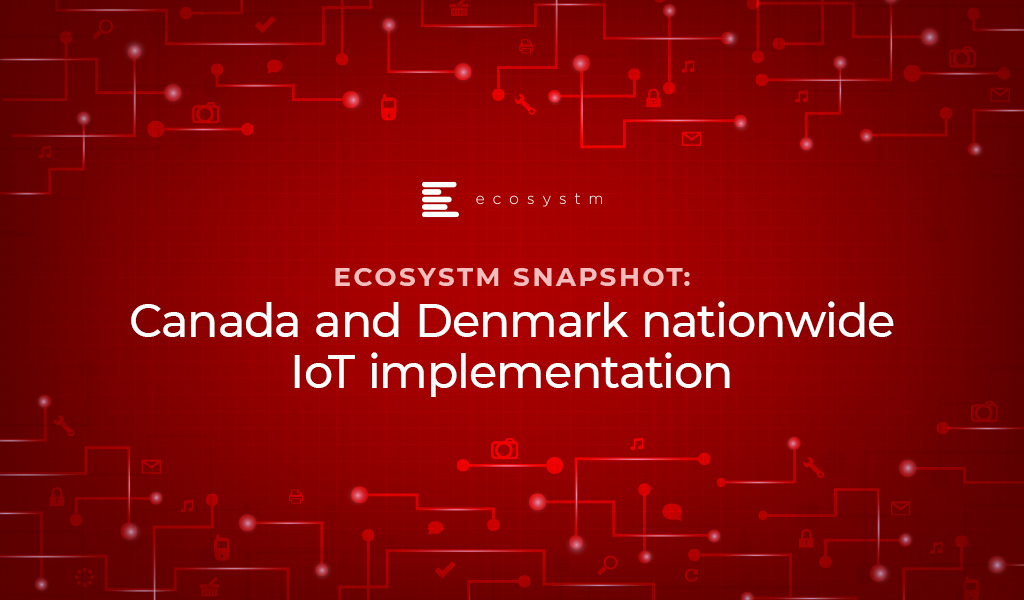
In the last few weeks, there have been announcements in Canada and Denmark on nationwide IoT networks launches. Moving away from pilot projects, test cases, implementations across large factories and campuses or even citywide networks to drive smart city initiatives; these countrywide IoT networks give organisations access to lower cost means to implement large, more integrated, IoT projects.
Sigfox Canada announced the launch of Canada’s first coast to coast low-bandwidth IoT network which is the nation’s first IoT network on such a scale. The network leverages low-power wide area network (LPWAN) technology offering a capacity to support millions of IoT sensors. The solution is anticipated to provide efficient and cost-effective connectivity for businesses looking to adopt IoT technology.
Similarly, Teracom, a Denmark-based telecom operator in partnership with Loriot, (an IoT infrastructure provider) announced an IoT LoRaWAN – Long Range Wide Area Network network in Denmark. We have previously seen the Netherlands implementing a nationwide long range (LoRa) network for IoT and Singtel’s commercially available narrowband Internet of Things (NB-IoT) network in Singapore.
“There is no doubt that services like LoRaWAN will help boost early adoption of IoT services and at this stage, there is a segment of the market which is a good fit. However, the longevity of LoRaWan is less certain. Compared to LoRaWAN, NB-IOT has arguably been too late to the game and it may fail in the short term but may very well win in the long term.” says Copenhagen based Ecosystm Principal Analyst, Claus Mortensen.
Efforts are being made by both the Sigfox and Teracom to enhance the network coverage and quality in the countries. A lot of the focus on IoT in Denmark has been bundled into the future deployment of 5G. However, most IoT applications do not need high bandwidth.
“The issues with large countries such as Canada, Australia, and the US is how do you economically cover large geographic area with a very varied population density? In contrast, smaller countries like Denmark can have a mesh thrown over them very easily” says Ecosystm Executive Analyst, Vernon Turner.
With 5G though, the telecom providers appear to be in a better position as they understand that 5G will be driven by the enterprise segment in the short to medium term and they have been actively involved in developing use cases from the get-go which also includes a focus on IoT services.
IoT offers a plethora of opportunities to companies looking to adopt or expand the country-wide networks. Both mature countries and emerging economies are at dissimilar life-cycles in their degree of IoT technology adoption but we expect to witness more technology sharing and network concatenation in the near-future.






